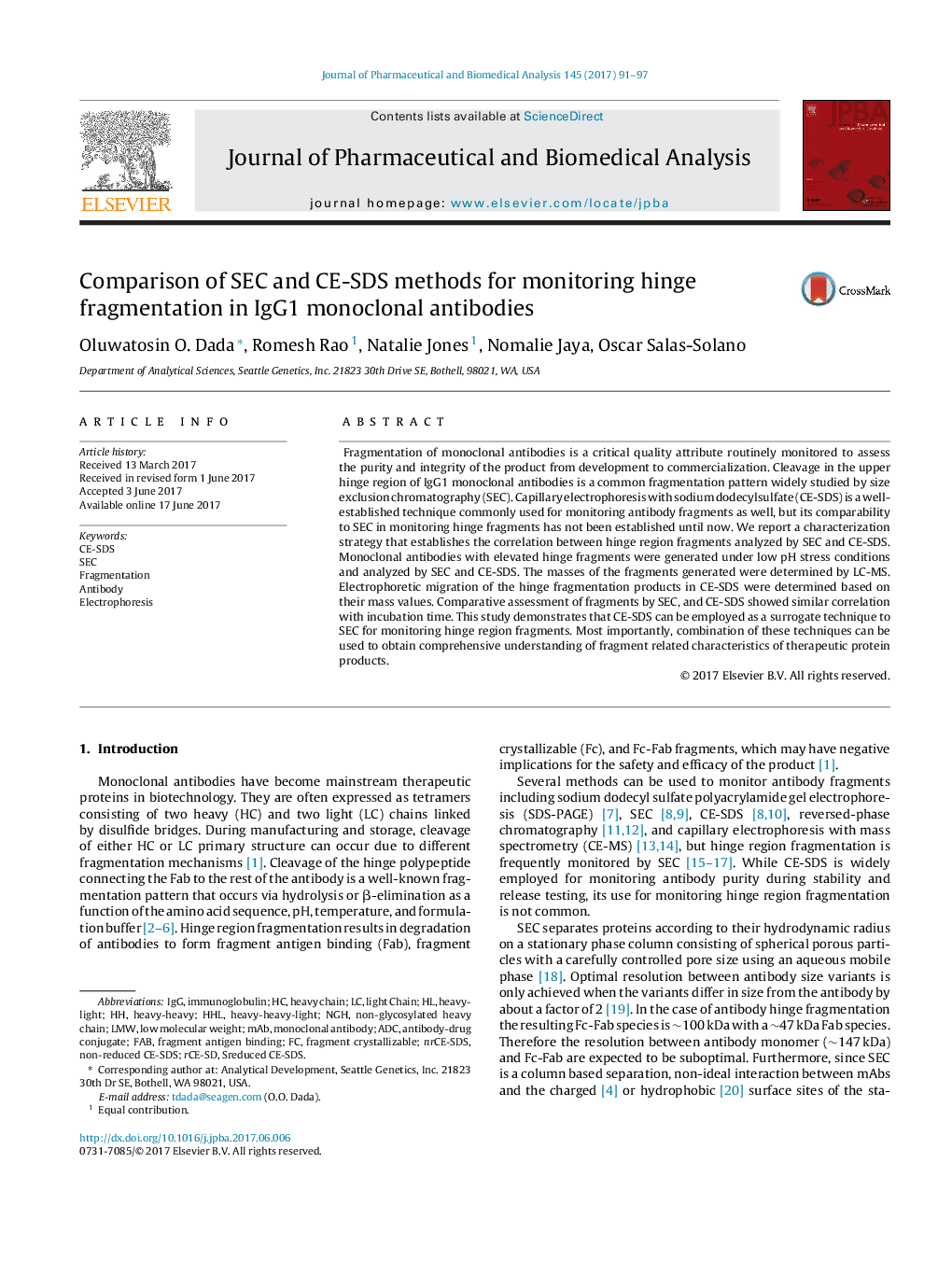| Article ID | Journal | Published Year | Pages | File Type |
|---|---|---|---|---|
| 5137734 | Journal of Pharmaceutical and Biomedical Analysis | 2017 | 7 Pages |
Abstract
Fragmentation of monoclonal antibodies is a critical quality attribute routinely monitored to assess the purity and integrity of the product from development to commercialization. Cleavage in the upper hinge region of IgG1 monoclonal antibodies is a common fragmentation pattern widely studied by size exclusion chromatography (SEC). Capillary electrophoresis with sodium dodecylsulfate (CE-SDS) is a well-established technique commonly used for monitoring antibody fragments as well, but its comparability to SEC in monitoring hinge fragments has not been established until now. We report a characterization strategy that establishes the correlation between hinge region fragments analyzed by SEC and CE-SDS. Monoclonal antibodies with elevated hinge fragments were generated under low pH stress conditions and analyzed by SEC and CE-SDS. The masses of the fragments generated were determined by LC-MS. Electrophoretic migration of the hinge fragmentation products in CE-SDS were determined based on their mass values. Comparative assessment of fragments by SEC, and CE-SDS showed similar correlation with incubation time. This study demonstrates that CE-SDS can be employed as a surrogate technique to SEC for monitoring hinge region fragments. Most importantly, combination of these techniques can be used to obtain comprehensive understanding of fragment related characteristics of therapeutic protein products.
Keywords
Related Topics
Physical Sciences and Engineering
Chemistry
Analytical Chemistry
Authors
Oluwatosin O. Dada, Romesh Rao, Natalie Jones, Nomalie Jaya, Oscar Salas-Solano,
